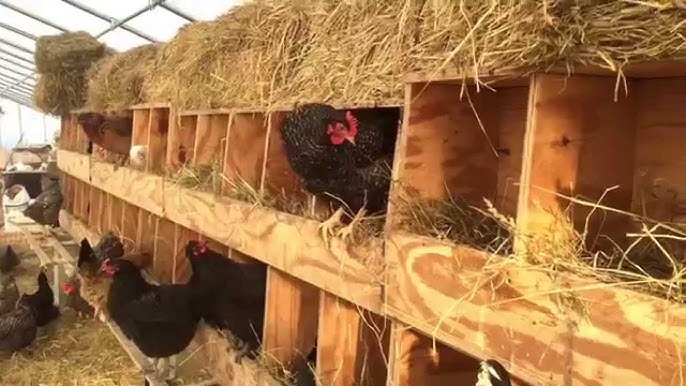For every enthusiastic chicken lover, understanding the importance of a nesting box with lid is crucial. These boxes provide a safe and secure environment for hens to lay their eggs, ensuring both the welfare of your poultry and the quality of the eggs. In this article, we will explore the benefits, types, and best practices for using a nesting box with lid.

What is a Nesting Box with Lid?
A nesting box with lid is a specially designed enclosure where hens can lay their eggs. The lid provides added protection, keeping the eggs safe from predators and environmental elements. The design of these boxes also encourages hens to lay eggs in a designated area, making egg collection easier and more efficient.
Benefits of Using a Nesting Box with Lid
Protection from Predators
One of the primary benefits of a nesting box with lid is the protection it offers. The lid acts as a barrier against predators such as raccoons and snakes, ensuring that your eggs remain safe.
Maintaining Egg Quality
By providing a clean and secure space, a nesting box with lid helps maintain the quality of the eggs. It prevents contamination from dirt and bacteria, which can affect the health of the eggs and ultimately, your chickens.
Encouraging Regular Laying
Hens are more likely to lay eggs consistently when they have a comfortable and secure place to do so. A nesting box with lid provides this environment, encouraging regular laying patterns.
Types of Nesting Boxes
Wooden Nesting Boxes
Wooden nesting boxes are a traditional choice, offering durability and a natural look. They can be easily customized to include a lid for added protection.
Plastic Nesting Boxes
Plastic nesting boxes are lightweight and easy to clean. They often come with built-in lids, making them a convenient choice for many chicken keepers.
Metal Nesting Boxes
Metal nesting boxes are known for their durability and resistance to weather conditions. They are a great option for those looking for a long-lasting solution.
How to Choose the Right Nesting Box
Consider the Size
The size of the nesting box with lid is important. It should be spacious enough for the hen to comfortably sit and lay her eggs, but not too large that it becomes difficult to manage.
Material Matters
Choosing the right material for your nesting box with lid is essential. Consider factors such as durability, ease of cleaning, and resistance to weather conditions.
Ease of Access
The design of the nesting box with lid should allow easy access for both the hens and for you to collect the eggs. A lid that opens easily is a great feature to look for.
Best Practices for Nesting Box Placement
Placement of the nesting box with lid is key to its effectiveness. It should be placed in a quiet and secluded area, away from the main activity of the coop. Ensure that the box is elevated from the ground to prevent dampness and to protect from ground predators.
Maintaining Your Nesting Box
Regular Cleaning
Regular cleaning is important to maintain the hygiene of the nesting box with lid. Remove old bedding and replace it with fresh material to ensure a clean environment for the hens.
Inspect for Damage
Inspect the nesting box with lid regularly for any signs of damage. Repair any cracks or broken parts immediately to maintain the safety and functionality of the box.
DIY Nesting Box with Lid
For those who enjoy DIY projects, creating your own nesting box with lid can be a rewarding experience. Check out this guide on how to build a chicken nesting box for detailed instructions.
FAQs About Nesting Boxes
What size should a nesting box be?
The ideal size for a nesting box with lid is approximately 12x12x12 inches. This provides enough space for the hen to comfortably lay her eggs.
How many nesting boxes do I need?
It is recommended to have one nesting box with lid for every four to five hens. This ensures that all hens have access to a place to lay their eggs.
What materials should I use for bedding?
Straw, hay, and wood shavings are popular choices for bedding in a nesting box with lid. These materials provide comfort and help maintain egg hygiene. Learn more about the best chicken nesting material.

Conclusion
A nesting box with lid is an essential component of any chicken coop. It provides a safe, comfortable, and hygienic environment for hens to lay their eggs. By understanding the benefits, types, and best practices for using these boxes, you can ensure the health and productivity of your flock.
For more insights on chicken care, visit community nesting box design and roll-away nesting boxes.
This article contains affiliate links. We may earn a commission at no extra cost to you.











